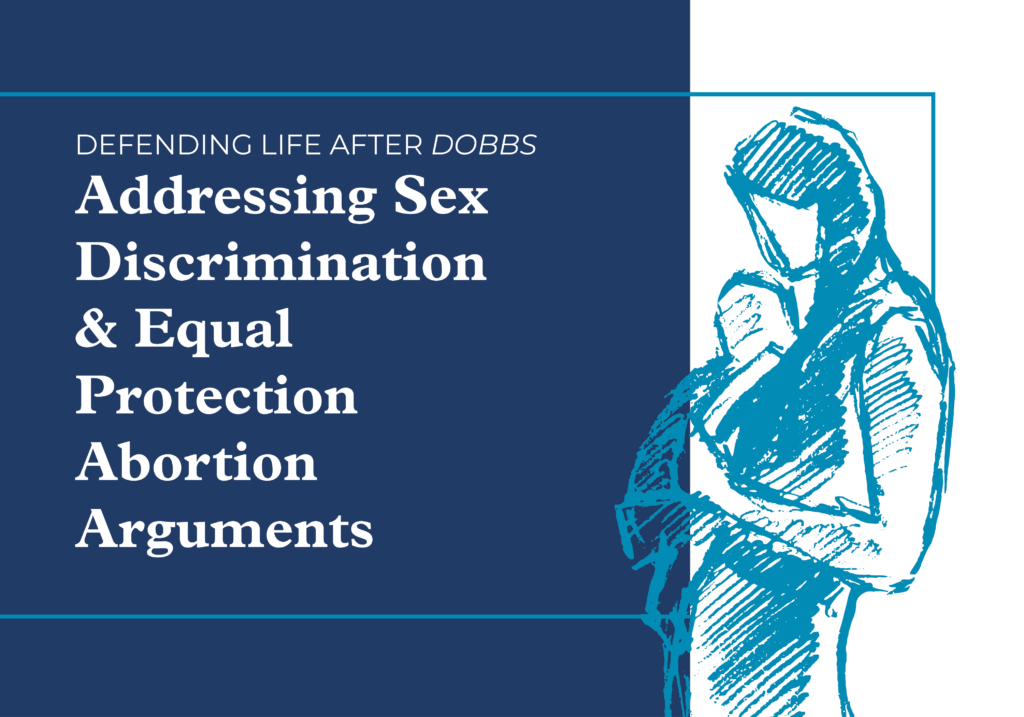
Published July 19, 2023
In the wake of Dobbs v. Jackson Women’s Health Organization, a number of state courts have enjoined abortion restrictions on the theory that they discriminate on the basis of sex. Pro-choice litigants and a few lower court state judges have argued that prohibitions on elective abortion, in the words of a Wyoming judge, “restrict the constitutionally protected right to make one’s own health care decisions” and thus “discriminate on the basis of sex.”
In Dobbs, Justice Samuel Alito maintained that the federal Equal Protection clause could not sustain abortion-rights claims, since the Court’s own precedent had “squarely foreclosed” this theory. But state courts have authority to interpret their own state constitutions more broadly than the Supreme Court has interpreted similar clauses in the federal Constitution. Without federal law protecting unborn children affirmatively, state courts may—and some have—interpreted their liberty, privacy or equality clauses more broadly to guarantee a supposed right to abortion. To make final determinations on the sex-discrimination claim, state supreme courts will need to dig more deeply into the equality theory of abortion rights than Alito did in Dobbs.
Because women and men are not “similarly situated” in terms of the biological capacity to become pregnant—a threshold question in this area of law—equality claims for abortion rights at both the federal and state levels are framed at a higher level of generality. The most popular of these claims is that women have a right, equal to that of men, to receive medical care. But even if we grant this framing, restricting a woman’s right to an elective abortion—a procedure unique to women—is not analogous to restricting a man’s right to a medical procedure that is unique to men.
Distinguishing between the cancer removed from the man’s prostate in surgery and the human child killed and removed from his mother in elective abortion is a basic exercise in legal reasoning: the first restores the man’s health, the second ends the dependent child’s life. If the mother’s life is threatened by the pregnancy, the comparison with the cancer-ridden man is far more apt: state courts thus far have been more likely to employ equality reasoning in situations where there is no direct abortion, but rather where medical treatment that may indirectly end the life of the un-born child is necessary to save the woman from a grave medical condition.
The best way to resolve these disputes is not to focus on the “unique” physical characteristics of men and women that would seem to undermine an equality claim. (In Dobbs, Alito went down this path by citing Geduldig v. Aiello as precedent that foreclosed the equality claim.) Though men and women are not similarly situated in pregnancy, discrimination on that basis still constitutes and is perhaps at the core of sex-discrimination arguments.
Rather, the focus in pro-life responses to sex-discrimination claims should be on the existence of a prenatal human child who is existentially dependent on his or her mother but to whom both mother and father owe duties of care. Due to reproductive asymmetry (the fact that women bear the burdens of pregnancy and men do not), law and culture may have a more difficult time enforcing a father’s duties to his children; but we do not allow fathers to end the lives of their children when those duties become onerous or are unchosen.
At this time, this kind of sex-discrimination argument is still a novel claim at the state level. However, pro-life advocates should closely watch the effects of state equal rights acts on abortion prohibitions, since these laws are typically interpreted to require strict scrutiny, the highest level of judicial scrutiny. But robust ERAs generally exist in the same states that would not pass abortion restrictions, and other states have specified that their ERA requires only heightened scrutiny and so mirrors federal equality protections. Moreover, a state’s interest in protecting unborn human life should pass even strict-scrutiny standards. Another area to watch for arguments on the basis of sex discrimination will be claims based on Section 1557 of the federal Affordable Care Act, which prohibits sex discrimination in covered health plans.
For further reading:
- Erika Bachiochi, “Embodied Equality: Debunking Equal Protection Arguments for Abortion Rights,” Harvard Journal of Law & Public Policy 34, no. 3 (2011): 889–950.
- Erika Bachiochi, “Sex-Realist Feminism,” First Things (April 2023), https://www.firstthings.com/article/2023/04/sex-realist-feminism.
- Sherif Girgis, “Update: Why the Equal-Protection Case for Abortion Rights Rises or Falls with Roe’s Rationale,” Harvard Journal of Law & Public Policy Per Curiam no. 13 (Summer 2022).












